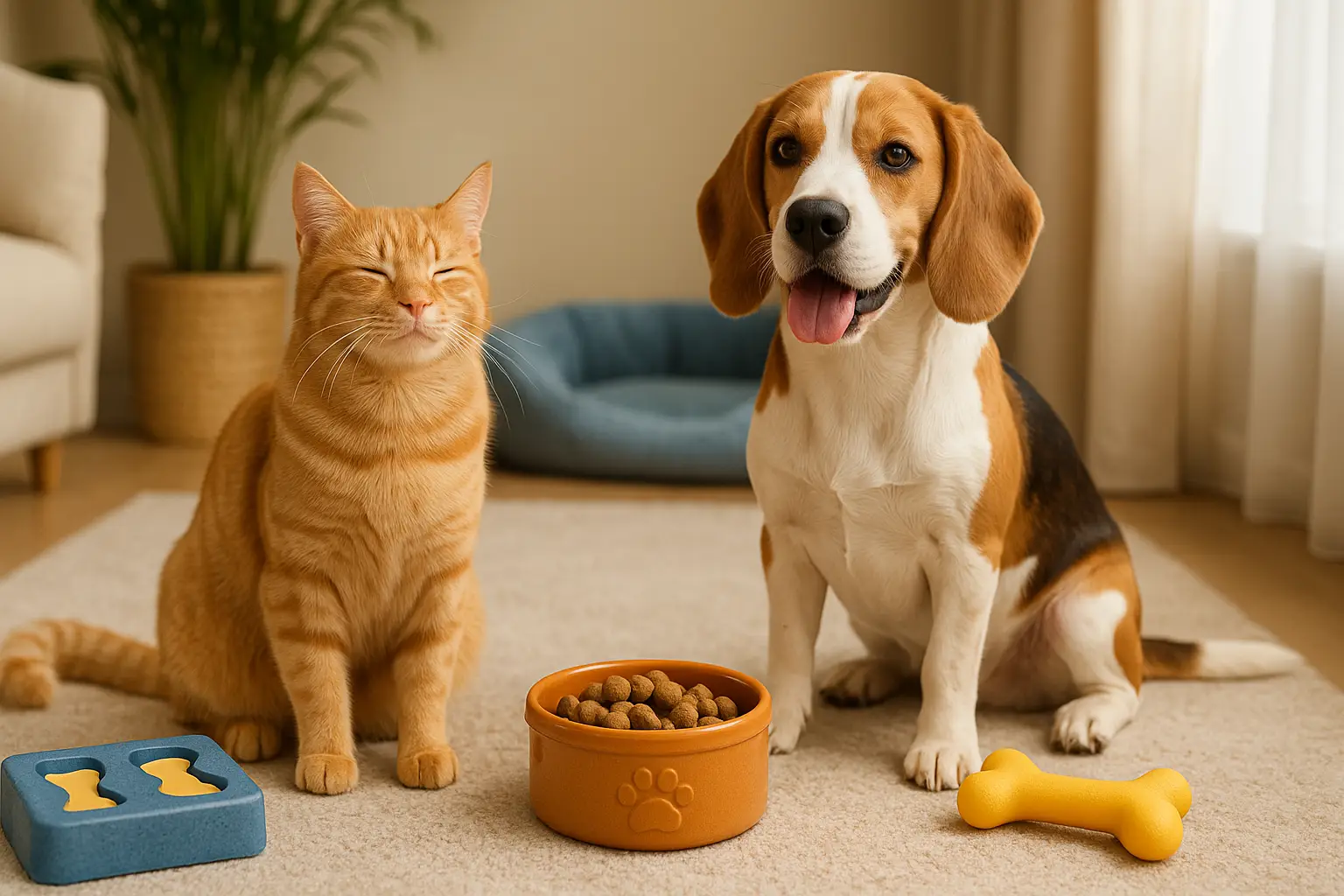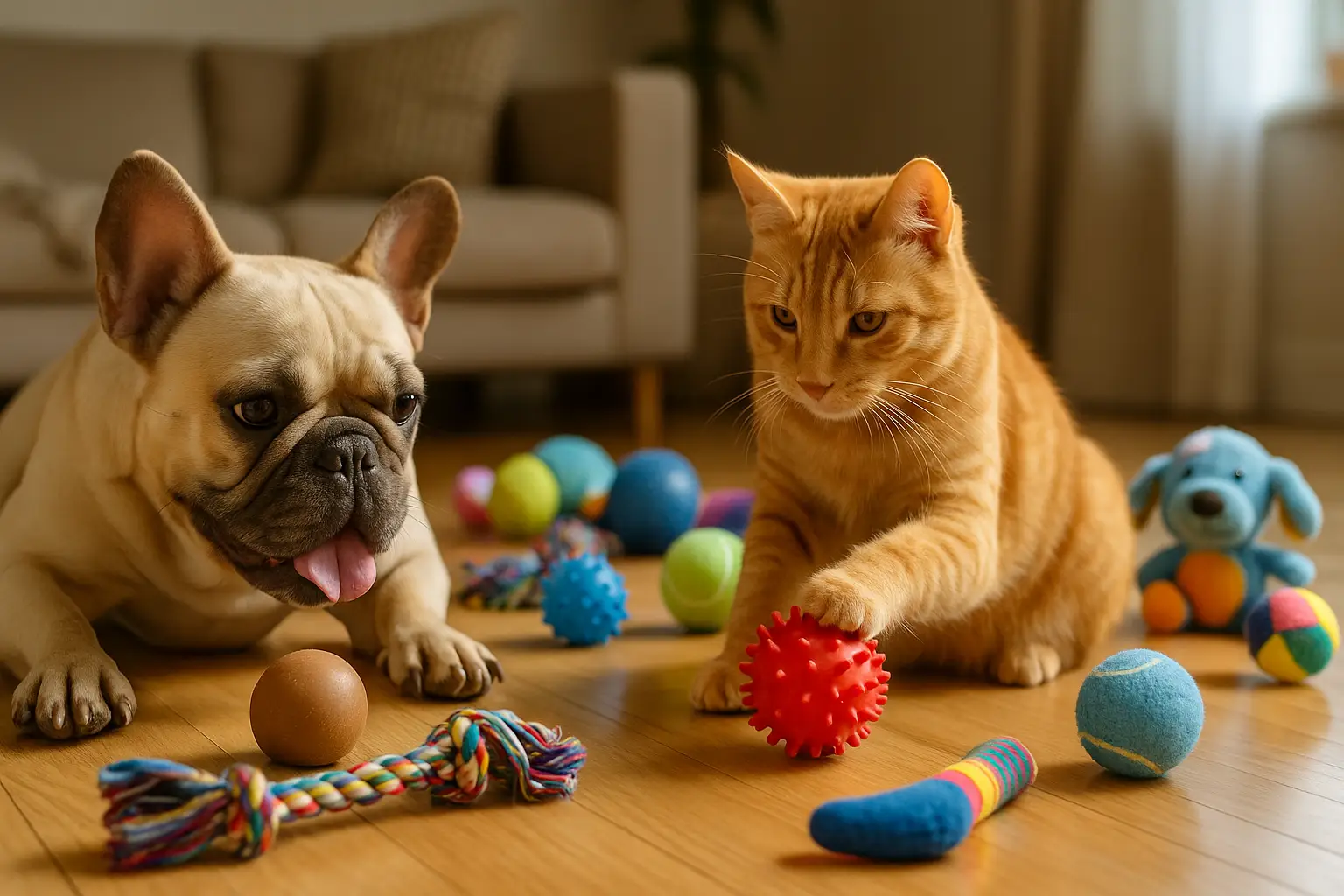How to Know If Your Pet Is Bored and What to Do About It

You come home from work to find your dog’s bed shredded, your cat meowing non-stop, or your rabbit chewing the furniture legs again. Sound familiar?
Before you chalk it up to “bad behavior,” there’s something important to consider:
Your pet might just be bored.
Boredom in pets is often misunderstood or completely overlooked. Many owners assume that their pet is fine just lounging around all day. But the truth is, animals—especially intelligent, social species like dogs, cats, birds, and small mammals—need daily mental and physical stimulation to stay balanced, healthy, and emotionally fulfilled.
This article will guide you through:
- How to recognize signs of boredom
- Why boredom happens in the first place
- The risks of chronic under-stimulation
- Solutions tailored to your pet’s species and personality
- Practical routines, enrichment ideas, and tools
Let’s uncover what boredom really looks like in animals—and how to transform it into play, purpose, and joy.
Understanding Boredom in Pets 🧠
Animals in the wild face challenges every day: they hunt, forage, avoid predators, seek shelter, socialize, raise young. These activities engage the body and mind constantly.
Domesticated pets, on the other hand, often have food served in bowls, naps on demand, and little to do while their humans are away.
While that might sound like luxury to us, it often leaves animals with unmet instinctual needs—especially working breeds, curious cats, or highly intelligent animals like parrots and ferrets.
When there’s no purpose or stimulation, boredom sets in.
And boredom isn’t just a feeling. It’s an emotional signal that something’s missing.
Common Signs Your Pet Is Bored 😿🐕
Boredom looks different depending on the animal. But some behaviors cut across species.
General Boredom Indicators:
- Pacing, circling, or repetitive motion
- Excessive sleeping (beyond normal rest)
- Overgrooming or fur-pulling
- Destructive behavior (chewing, digging, scratching furniture)
- Barking, howling, whining, meowing excessively
- Hyperactivity when you return home
- Aggression or attention-seeking
- Litter box problems in cats
- Chewing cage bars in small pets
Some pets become destructive. Others withdraw or show signs of anxiety.
Either way, it’s a red flag that your pet needs more enrichment and structure.
Species-Specific Signs of Boredom 🐶🐱🐰🐦
Dogs:
Dogs are especially prone to boredom, particularly active or intelligent breeds like border collies, huskies, labs, and terriers.
Look for:
- Chewing shoes, walls, or furniture
- Barking at nothing
- Escaping the yard
- Digging holes
- Jumping or nipping for attention
- Compulsive licking or tail chasing
Cats:
Cats are independent, but they’re also natural hunters and explorers. Without stimulation, they can turn erratic.
Signs include:
- Knocking things off shelves
- Meowing constantly (especially at night)
- Pouncing on you randomly
- Overeating or ignoring food
- Scratching furniture even when scratchers are available
Rabbits, Guinea Pigs, and Rodents:
These animals often suffer in silence.
Watch for:
- Chewing wires, furniture, or their own cage
- Overgrooming
- Hiding all day
- Circling or pacing
Birds:
Parrots and other birds are incredibly intelligent and emotional.
Warning signs:
- Feather plucking
- Screaming
- Swinging or flapping repeatedly
- Aggression when approached
Why Boredom Happens 🤔
Pets get bored for several reasons, often overlapping:
- Lack of stimulation (no toys, games, puzzles, or activities)
- Predictable routines (same walk, same room, same everything)
- Loneliness (especially if left alone all day)
- Unmet instincts (like chewing, digging, climbing, or foraging)
- No interaction or training (especially for social pets)
- Inappropriate environment (too confined, sterile, or quiet)
In short: when pets don’t have a job, challenge, or engagement, they act out.
And it’s not their fault.
The Risks of Unchecked Boredom ⚠️
Ignoring boredom can lead to both emotional and physical issues.
Long-term consequences include:
- Obesity (from inactivity or emotional eating)
- Separation anxiety
- Destructive behaviors becoming habits
- Depression-like symptoms (low energy, detachment)
- Self-harm (fur pulling, biting)
- Weakened bond with the owner
- Health issues from stress (ulcers, weakened immune system)
That’s why managing boredom is about more than keeping your pet busy.
It’s about preserving their health, happiness, and emotional well-being.
Daily Enrichment: The Cure for Boredom 💡
Combating boredom isn’t about buying more toys—it’s about creating a richer life experience for your pet.
Let’s explore daily, realistic strategies to help your dog, cat, or other animal live a life full of interest and stimulation.
🐶 How to Help a Bored Dog
Dogs need both physical AND mental stimulation. Here’s how to balance both:
1. Make Walks Smarter
Don’t just drag your dog around the block—let them sniff!
Sniffing is mental exercise. Vary the route, explore new parks, or even go on “sniffaris” (slow, sniff-filled walks).
2. Introduce Puzzle Feeders
Stop feeding from a bowl. Use puzzle toys, slow feeders, or frozen KONGs to engage your dog’s brain.
3. Learn New Tricks
Dogs of all ages can learn. “Touch,” “spin,” and “find it” are great boredom-busters that create focus and boost confidence.
4. Add Purposeful Play
Rotate tug ropes, fetch balls, squeaky plushes, and chews. Don’t leave all toys out—keep them interesting.
5. Build Daily Routines
Predictability reduces anxiety and increases trust. Walk → rest → puzzle → nap → play → meal → calm time.
A well-structured day = a well-behaved dog.
😺 How to Help a Bored Cat
Yes, cats get bored too—even if they seem “low maintenance.”
1. Vertical Enrichment
Install cat trees, shelves, or window perches. Cats love to climb and observe.
2. Simulate Hunting
Use wand toys, laser pointers, or toy mice in short bursts. Follow this sequence: stalk → pounce → catch → eat.
3. Rotate Toys
Don’t let them sit in a pile. Swap toys every 3–4 days. Hide toys in different rooms to encourage exploration.
4. Food Enrichment
Use food puzzles or treat balls. Try scattering food to simulate foraging.
5. Set Up a Cat TV
Place a bird feeder near a window. Add a cozy perch. Let your cat watch and “hunt” safely.
🐰🐹🐦 Small Pet Enrichment
For Rabbits and Rodents:
- Add cardboard tunnels and boxes
- Hide food in hay for foraging
- Offer safe chew toys (wood, hay, untreated cardboard)
- Rearrange the environment weekly
- Provide out-of-cage time in a safe area
For Birds:
- Rotate perches, mirrors, swings
- Offer shreddable toys
- Teach target training with clickers
- Introduce sound toys
- Use foraging puzzles for treats and food
Create a Weekly Enrichment Schedule 📅
Rather than trying to entertain your pet all day, build a realistic, rotating routine.
Example (for a dog):
Monday: Frozen peanut butter KONG + new walking route
Tuesday: Puzzle feeder breakfast + trick training session
Wednesday: Long tug play + car ride
Thursday: Hide-and-seek games indoors
Friday: Snuffle mat + guest interaction
Weekend: Outdoor adventure or playdate
Use simple variations for cats or small pets—just keep it fresh and intentional.
Combat Boredom When You’re Not Home 🏠
You can’t be home 24/7—but enrichment doesn’t have to stop.
What You Can Do:
- Leave music or pet TV
- Use a camera with treat dispenser
- Schedule dog walkers or pet sitters
- Offer chew-safe toys and puzzle feeders
- Hide treats in various places (treasure hunt!)
- Set timers for interactive toys or feeders
Tip: Leave something that smells like you (a shirt, blanket) to comfort anxious pets.
Play Is Love: Strengthen the Bond ❤️
Enrichment isn’t just about “keeping your pet busy.”
It’s how they connect with the world—and with you.
When you make space for your pet’s mental and physical needs, you’re speaking their language.
You’re saying:
I see you. I understand what you need. I want you to feel safe, challenged, and fulfilled.
And that’s powerful.
Final Thoughts: A Fulfilled Pet Is a Happy Pet
Boredom is more than just “nothing to do.” It’s a sign of unmet needs—often emotional, instinctual, or social.
But the solution is within reach.
It’s in the ten minutes of trick training.
It’s in the walk you take a little slower so your dog can sniff.
It’s in the laser pointer your cat can chase, or the cardboard box you give your rabbit to destroy.
Every small moment of engagement builds a better life.
You don’t need to be perfect.
You just need to observe, listen, and try.
And your pet? They’ll show you their gratitude—one playful, tail-wagging, purring, chirping moment at a time.




Post Comment